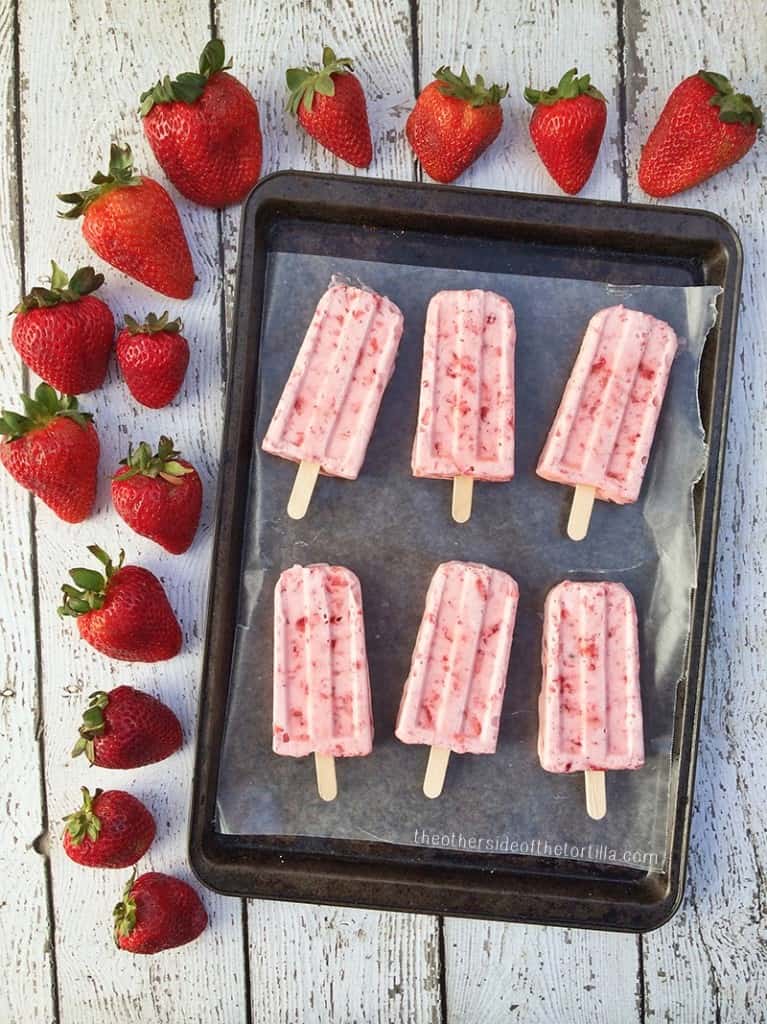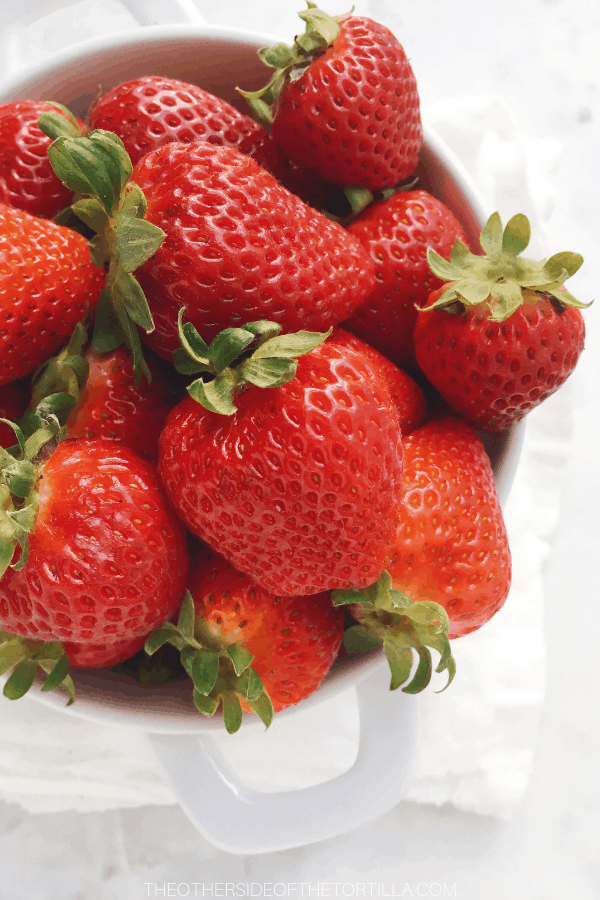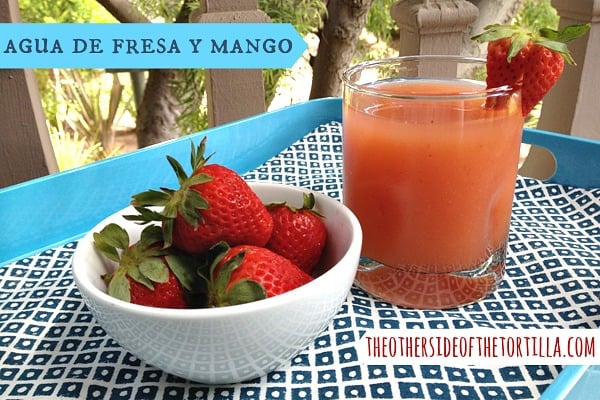Fresas con crema are a traditional, popular dessert all over Mexico.
Irapuato, a town in the state of Guanajuato, is particularly known not only for its bountiful strawberry fields, but also its roadside stands where you can get freshly picked berries or an impromptu treat of fresas con crema. Most of the roadside stands keep a cooler with crema on ice for highway travelers hankering for this sweet and simple treat. With only three ingredients—strawberries, cream and sugar—it’s easy to fall under this dessert’s spell.
You’ll love these popsicles so much, you’ll want to eat them all spring and summer long until you can’t get any more strawberries.

Variations on the traditional fresas con crema mostly come in the choice of the “crema” part of the recipe. Some people like to use crema Mexicana, while others may use a canned version known as media crema table cream. These Mexican strawberries and cream popsicles are made a little less dense—but equally creamy—with a quick homemade whipped cream made from scratch.
Paletas de fresas con crema are one of my absolute favorite desserts for spring and summer, and my friends, family and co-workers all love when I make a big batch of these popsicles to share. During the hottest days of the summer, I suggest freezing them overnight before serving so they aren’t quick to melt in the heat.

Supplies I used to make this recipe:
Progressive International Ice Pop Mold
Wooden popsicle sticks
Cuisinart Mini Prep Plus food processor

Paletas de fresas con crema
- Prep Time: 1 hour, 15 minutes
- Cook Time: 8 hours
- Total Time: 9 hours, 15 minutes
- Yield: 10 3-oz popsicles 1x
- Category: Dessert
- Cuisine: Mexican
Description
Fresas con crema, a traditional Mexican dessert of strawberries, cream and sugar, gets a warm-weather makeover as popsicles.
Ingredients
- 1 pound ripe strawberries, stems removed
- 1/2 cup Zulka Morena sugar (a Mexican non-GMO sugar)
- 1 cup heavy whipping cream
- 3–4 tablespoons sugar
Instructions
- Wash and dry 1 pound of strawberries, then remove stems.
- Slice strawberries and put them in a deep bowl. Sprinkle 1/2 cup sugar over the strawberries and stir gently to coat. Allow strawberries and sugar to macerate for 1 hour to draw out the juices.
- While the strawberries are macerating, measure 1 cup heavy whipping cream and put it in the freezer for 1 hour, gently stirring once after 30 minutes so no ice chunks form.
- After 1 hour, add the macerated strawberries to a food processor (I use a Cuisinart mini prep) or a blender and pulse a few times until the strawberries are chopped but not liquified. Add them back to the bowl.
- Clean out your food processor cup or blender and dry thoroughly. Remove the heavy whipping cream from the freezer and add to the food processor cup or the blender. Add 3 tablespoons sugar (or 4 tablespoons if you like your fresas con crema to be very sweet). Run the food processor or blender on high until you have a thick, sweet whipped cream. (Be careful not to overwhip,or you’ll end up on your way to making butter.)
- Spoon the whipped cream into the bowl of macerated strawberries with a flexible spatula and gently fold the whipped cream into the berries.
- Pour into popsicle molds and freeze for a minimum of 6-8 hours or overnight.
Notes
Active prep time is 1 hour and 15 minutes; inactive time is for freezing the popsicles until solid.
To loosen the popsicles from the molds, run the bottom of the molds under cool or lukewarm water for a few minutes. They should slide right out.
*If you use processed white sugar for this recipe, you will want to reduce the amount of sugar by 1/3 to 1/2 and taste along the way to make sure that it’s not too sweet for your liking. I prefer not to cook with white sugar and do not keep it in my pantry.
Keywords: fresas con crema, strawberry, strawberries, popsicles, paletas, ice pops
You might also like to read…
